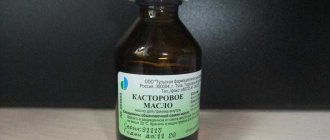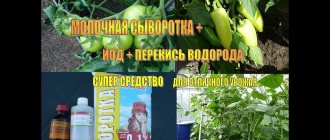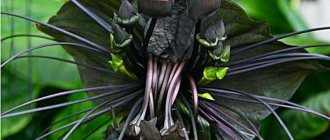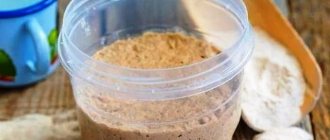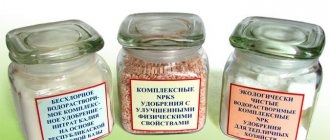After burning organic matter (firewood, last year's grass, cut branches, etc.), a non-combustible residue remains - ash. It contains mineral salts and many valuable substances that can be absorbed by plants. Fertilizing with wood ash enriches the soil with potassium and phosphorus salts - two of the 3 elements most necessary for plants.
Feeding with ash. The illustration for the article is used under a standard license ©ofazende.ru 618
What ash should not be used in the garden?
First of all, you need to pay attention to the mineral composition of this fertilizer. Not all ash is useful, as it differs in its composition. It depends on the initial raw materials that were used for its manufacture. Typically, gardeners use the ashes that remain after burning unnecessary garbage. However, the raw materials do not always contain the necessary components to create the correct ash that can fertilize plants.
What ash should not be used in the garden:
- For example, young trees and shoots contain a lot of potassium. Rotten wood contains large amounts of calcium. There are raw materials that are absolutely unsuitable for producing ash. You can highlight old newspapers, magazines, printed materials, plastic items, clothes, shoes.
- The composition of magazines is harmful not only to the compounds used to make the paint, but also to the gloss itself. When shiny paper is burned, the substance dioxin is released, which will poison plants for several years after being added to the soil. Be sure to remove old newspapers and magazines. Young tops are also not suitable, since they contain a large amount of harmful mineral impurities that should not be in the ash. When burned, plastic products release large amounts of heavy metals and toxic substances that will spoil the composition of the soil.
- Under no circumstances should ash be used if it was obtained by burning old boards coated with varnish or paint. They contain heavy metals and harmful components. Such ash cannot be disposed of when fertilizing beds; it must be thrown away. Please note that it is possible to produce ash that is rich in a certain amount of minerals. For example, most phosphorus is found in potato tops, and potassium is found in sunflower stems.
Field work
succinic acid
Succinic acid is obtained after processing natural amber and has a lot of useful qualities, which is why it is widely used, including for feeding home flowers.
We suggest you familiarize yourself with How to make snow retention on the roof
Succinic acid solution is an excellent fertilizer for indoor plants
To prepare a nutrient solution, dilute 1 g of the drug in 5 liters of water. This liquid can not only be watered, but also sprayed on house plants. Begonias, aglaonemas, citrus fruits, chlorophytums, ficuses, haworthias, prickly pears and crassulas are especially fond of such feeding. Please note: you can use succinic acid to feed home flowers no more than once a year, otherwise you risk getting the opposite effect.
Chicken manure (granulated) 69 RUB Russian Vegetable Garden Granulated wood ash 179 RUB Russian Vegetable Garden Gumi-30 super-universal (paste) 19 RUB Russian Vegetable Garden Horse manure (granulated) 2 kg. 159 RURRussian Vegetable Garden
There are several other options that are used less frequently, but, according to their supporters, are no less effective:
- Some gardeners use water from washing cereals to feed home flowers: buckwheat, rice, millet, etc., which contains iron, silicon, phosphorus and magnesium;
- eggshells, according to many lovers of home flowers, are also very useful. It is buried in the soil during plant transplantation, and the water used for irrigation is infused on it, but whether it is actually a top dressing is a question. Yes, eggshells contain a large amount of calcium, but it is practically inaccessible to plants, and then what is the use of it? Moreover, a very limited number of indoor flowers are distinguished by their love for calcium, and its excess in the soil only contributes to the fact that plants begin to develop chlorosis. So it turns out that the use of eggshells as a fertilizer is very doubtful, except that it can become excellent drainage;
Toothpaste and tooth powder can also become fertilizers for home flowers. To prepare a mix with tooth powder, you need 3 tbsp. spoons of powder, 3 tbsp. spoons of wood ash and 1 tbsp. Dilute a spoonful of copper sulfate in a liter of water. This fertilizer does not need to be infused; it can be used immediately after preparation. You can make fertilizers with toothpaste very easily and quickly: dissolve a third of a tube of toothpaste in 1 liter of water. This feeding will provide nutrition to the roots of the flowers, as a result of which the plants will acquire a healthier appearance.
And lastly: before using fertilizers for house flowers, remember a few simple rules:
do not feed the transplanted plants earlier than after 2 months, because fresh soil also contains nutrients, the excess of which will only lead to the death of the green pet; before fertilizing, water the soil with plain clean water, this will help you not to destroy them if the fertilizer turns out to be concentrated; all weakened or diseased plants must be fed very carefully, using a fertilizer solution of significantly lower concentration for these purposes; There is no need to fertilize all year round; house flowers only need fertilizer in the spring-summer period.
When using various fertilizers for home flowers, try not to overdo it, because everything is good only in moderation, and an excess of nutrients will disrupt the uniform development of your plants and can cause their death. That is why fertilizing must be correct and as balanced as possible, only in this way can it be beneficial.
Fertilizer Health for violets and begonias 109 RURRussian Vegetable Garden Fertilizer Phosphatovit for indoor plants 120 RURRussian Vegetable Garden Fertilizer for indoor flowers Prompter 49 RURRussian Vegetable Garden Fertilizer for indoor flowers Miracle-Humus 59 RURRussian Vegetable Garden
What fertilizers should you not mix ash with?
Ash is a component that is not allowed to be mixed with all fertilizers. Due to its rather broad and rich mineral composition, the microcomponents contained in it can enter into a chemical reaction with elements contained in other organic fertilizers.
What fertilizers should you not mix ash with:
- Under no circumstances should ash be mixed with ammonium nitrate . The fact is that some alkali metals, such as potassium or calcium, react with ammonia, releasing substances that are not soluble in the soil. The effect of ammonium nitrate is reduced or completely eliminated. Therefore, approximately 2-3 weeks should pass between feedings. It is not worth using fertilizer at the same time by mixing these components.
- There are a huge number of fertilizers that react chemically with ash. Among them, it is worth highlighting nitrogen mineral fertilizers . That is, those that contain ammonium, ammophosphate or ammonium nitrate. When these components are mixed, a chemical reaction occurs, as a result of which insoluble precipitation may form and active nitrogen evaporates. Plants do not receive a vital component. To minimize the release of nitrogen, the soil is sprinkled with a thick layer of peat, or the soil is cultivated to form a crust. This prevents the release of nitrogen gas into the atmosphere. It is best to apply these fertilizers separately.
- Superphosphates. These fertilizers contain nitrogen and phosphorus. When ash and nitrogen interact, it turns into a gaseous state and evaporates. The ash contains a large amount of phosphorus, but there is also a lot of it in superphosphate; you can overdo it with this component. Accordingly, the additive will not be useful, but harmful. It is believed that ash can be mixed with double superphosphates, but the percentage of the alkaline component should be no more than 7-8%.
- Bird droppings and mullein. These are organic fertilizers that contain nitrogen. Accordingly, if you mix these components, nitrogen will go into a gaseous state and evaporate. Therefore, it is best if the frequency of fertilization with components is one to two weeks.
Fertilizer
Proper storage of ash fertilizers
The ashes should be scooped out of the oven with a large scoop and placed in a dish without cracks to avoid the ingress of excess moisture. Gardeners recommend building a fire either on a sheet of iron or in a metal fireproof container. This way it will be as convenient as possible to collect ash. And the best thing is to place a metal mesh there, where you put all the organic matter before setting it on fire. After the end of combustion, large residues are easily separated from fine ash.
You should not delay collecting ashes. The longer it sits in the air, the more nutritional properties it will lose due to exposure to moisture. The collected ash should be kept in an airtight container to prevent it from becoming damp. It is advisable to choose a cool, dark place for long-term storage.
Ash obtained as a result of combustion of the following objects is absolutely not suitable for feeding:
- Plastic, newspapers and magazines, polyethylene, rubber and other household waste. Such ash will not only not help the plant, but will also easily cause the death of the plantings.
- Organic matter collected along major highways and industrial sites. Most likely, such ash will contain increased levels of lead concentration.
- Wooden boards, furniture made of wood or chipboard. The ash will certainly contain remnants of varnish, paint and glue, which could have been used to connect the elements of objects.
Under suitable conditions, ash can be stored from 6 months to several years. The main thing is to prevent moisture from entering, otherwise some of the beneficial properties will be lost. Due to getting wet, potassium will evaporate first.
Ash from fuel briquettes, as a rule, can be used as ordinary ash to deoxidize the soil for planting vegetables. True, you definitely need to look at the composition, since sometimes unscrupulous manufacturers use glue to prevent the product from falling apart. In this case it cannot be used. Ash from briquettes should not be used as fertilizer.
When to add ash, in autumn or spring?
There is a period when it is best to fertilize with wood ash. Depending on the time of year and month, growth and the need for certain nutrients differ.
When to add ash, in autumn or spring:
- It is best to apply nitrogenous fertilizers, such as ammonium nitrate, in the spring. It is during this period that plants need the active formation of juices and green leaves. In summer, it is best to use fertilizers that contain large amounts of potassium and phosphorus.
- Fall is the ideal time to apply fertilizers high in potassium and calcium. Among them it is worth highlighting ash. Therefore, it is best to apply this fertilizer not in the spring, but in the fall, after the harvest is harvested. During the winter, it can be changed and is better absorbed, changing the composition of the soil for the better.
- Not all plants need to be fertilized with ash, as they prefer acidic soil. Ash alkalizes the soil, increasing its pH. Thus, it is necessary to control the acidity of the soil from time to time. If it is more than 7, then there is no need to apply fertilizer in the form of ash.
- An alkaline environment is harmful to plants and significantly reduces their growth.
Treatment
How can you replace ash?
Ash helps normalize soil acidity. But if your soil is highly acidified and there is no ash, then other fertilizers can be used, for example, lime or dolomite flour. To breed them, the following proportions must be observed:
| Name | Medium acid soil | Acidic soil |
| Dolomite flour | 400 g per 1 sq.m. | 500 g per 1 sq.m. |
| Lime fluff | 300 g per 1 sq.m. | 500 g per 1 sq.m. |
What vegetables cannot be fertilized with ash?
Some crops like acidic soil, and adding ash makes it alkaline. Therefore, under no circumstances should you use ash to fertilize some vegetables.
Which vegetables cannot be fertilized with ash:
- Radish
- Sorrel
- Spinach
- Rhubarb
Radishes are a crop that loves medium-acidic soils that are loose. It is best to treat with ash a year before planting the crop. If you fertilize the soil in which radishes grow with ash, you will get yellow leaves, small root vegetables, and a large number of arrows. The harvest will be very poor.
Rhubarb also prefers to grow in soils that are slightly acidic. You will not get a full harvest and seeds. Please note that even those plants that respond well to fertilizing with ash should not be fertilized with this component if premature shedding of leaves is noticeable, the fruit becomes bitter, and the soft part of apples and pears turns brown.
Ash
Types of ash for plant nutrition
Ash can be obtained by burning dry straw, grass, branches and leaves of deciduous and coniferous trees. They even use it with leftover coals. You cannot fertilize with red-colored ash due to its high iron content, as well as with ash and coals from burned household waste, paint, film, newspapers - all harmful substances will pass into plants and pollute the soil.
In terms of chemical composition, fern leaves and sunflower stems contain the most potassium and phosphorus - up to 40%; other plants produce half as much of these minerals when burned. Pine and birch firewood provides the most calcium. Ash also contains magnesium, manganese, sulfur, boron, copper, all of which are in a form that is easy for plants to absorb. The poorest ash is considered to be shale and peat - it contains only 1-1.5 percent of potassium and phosphorus, and half as much potassium as can be obtained from grass and firewood.
What flowers cannot be fertilized with ash?
Ash should not be introduced if the soil is saturated with a large amount of calcium. This can be detected by excessive growth of leaf rosettes, dying off of tomato shoots, and the appearance of white spots on the leaves of various crops. It is best to apply fertilizer in small quantities when growing seedlings. Under no circumstances should you apply urea and complex nitrogen fertilizers at the same time. This can lead to plant death.
Which flowers cannot be fertilized with ash:
- Among indoor plants, a large number of crops love acidic or slightly acidic soils. Accordingly, ash cannot be used in this case.
- Azaleas, hydrangeas and gardenias love acidic soils. Slightly acidic soil is preferred by orchids, violets, dieffenbachias, and dracaenas.
- These plants are allowed to be fed with ash once a year. Frequent use of this additive will lead to withering of the shoots.
Application
Application for various plants
Each crop has its own needs for nutritional components, so ash is added without fanaticism, taking into account the specifics of the plants.
In the garden
Universal fertilizer is most often used for garden crops. Vegetables such as tomatoes, bell peppers, cucumbers, and eggplants love potassium, so ash is constantly added: into holes when planting seedlings, as fertilizer, for mulching.
Feeding seedlings with ash is useful; the powder is also added to nutrient soil mixtures, improving the composition of the soil.
Feeding the following crops has a good effect:
- representatives of the Solanaceae family (tomatoes, peppers, eggplants, potatoes), in greenhouses and open beds;
- legumes;
- tobacco;
- cucumbers;
- greens (parsley, dill, lettuce).
| Culture | Application rates and methods | Notes |
| Potato | Tubers are dusted before planting. A handful of ash is placed in the holes, poured into the rows, added dry during hilling (2 tbsp under the bushes) | |
| Dill, parsley | When preparing a bed in the spring - 100 g per 1 m² into the soil | 100 g ash - 1 cup |
| Salad | When digging a bed, 100-150 g per 1 m² of soil | |
| Garlic and onion (winter crops) | In dry form in the ground when digging in the fall. Norm: 100 g per 1 m² | |
| Tomatoes, sweet peppers, eggplants | Ash for seedlings - from blackleg. Powder the top layer in boxes, cups or cassettes. When planting seedlings - 50 g per hole for each bush. During the season, adult plants are watered with infusion 2-3 times. | |
| Cucumbers, zucchini | Add a handful of ash to the hole when planting seedlings. Dust the top layer of soil around the plants after planting the seedlings (1-2 cups per bush). During the growing season, water with infusion 2-3 times per season, interval - 2-3 weeks | |
| Cabbage | Apply 200 g per 1 m² for digging beds | Cabbage can be fertilized with residues from burning coal |
In the garden
To increase productivity, ash is fed to fruit and berry crops. Exceptions: blueberries, cranberries, lingonberries.
| Plants | Application rates and methods | Notes |
| Pome and stone fruit crops | For seedlings - 1 kg per planting hole. In autumn - a bucket under a tree with embedding in the ground | For mature trees, the additive is applied every two years. |
| Berry bushes (raspberries, currants) | In the ground in tree trunk circles, 300 g per 1 m² | The best time is autumn. Fertilizing increases the frost resistance of shrubs and strengthens the immune system. |
| Garden strawberries (strawberries) | When preparing a site in autumn or early spring for planting - 100 g per 1 m². Before flowering, in the budding phase, foliar feeding with ash infusion with the addition of boric acid and potassium permanganate (2 g per bucket). Dusting the soil between the rows (after fruiting) - a glass per 1 m² | Spray plantings in cloudy weather or in the evening |
| Grape | In the spring, fertilize with dry fertilizer (incorporation into the soil in tree trunk circles), under the vine - 1.5-2 kg. In June, dust the soil, 200 g per vine. In the fall, fertilize the plantations with ash infusion, pre-watering. Norm: 20 liters of water under the vine and a bucket of ash infusion (three glasses are diluted per 10 liters) | The fertilizing scheme on a grape plantation is used once every 3-4 years. On alkaline soils, the amount of ash is halved |
For indoor plants
For crops in pots on window sills, balconies and loggias, ash is used selectively as a fertilizer. Many house plants prefer acidic soils, so such fertilizing is contraindicated for them.
No need for ash:
- gardenias;
- cypress trees;
- callas;
- azaleas;
- anthuriums.
Violets and orchids should be fed very carefully - only in small quantities and without sudden changes in pH.
The additive is used in the form of powder (dusting) or infusion, no more than 2 times a year.
Standard solution for indoor plants:
- take 100 g of product per 3 liters of water;
- pour hot water;
- stand for 3-4 days;
- filter.
Water at the root: large specimens - 0.8-1 liters of solution, "little ones" - 0.5 liters. Dust with ash in case of root rot, or when pests (aphids, mites) appear.
In the flower garden
There are also fans of ash fertilizer among the inhabitants of flower beds and garden beds. Most crops prefer to grow on slightly acidic and alkaline soils, so ash will be useful for growth and lush flowering.
Fertilizing has a good effect when applied to the following plants:
- clematis;
- roses;
- lilies;
- gladioli;
- peonies;
- hyacinths;
- perennial asters;
- delphiniums;
- chrysanthemums.
Proportions:
- for spraying with a liquid solution - 2 glasses are diluted in a ten-liter bucket of water;
- for irrigation, stir a glass of ash powder in the same amount of water.
When watering roses, it is advisable to leave sediment at the bottom of the container, using only liquid. For gladioli, peonies, and lilies, it is recommended to add ash to the holes when planting (a tablespoon at a time).
How to properly dilute ash for feeding?
Mixing organic and inorganic fertilizers is not recommended not only because of the chemical reaction, but because they differ in function. Ash works best when applied to the soil in the fall.
How to properly dilute ash for feeding:
- It is often applied in the second half of summer, in August, when the fruits ripen. Manure and droppings are usually added to the soil first to promote the development of stems, leaves, and green mass. Please note that ash is best mixed with compost and herbal decoction.
- These components do not react with each other and have similar properties. Usually, for 10 liters of water, take a glass of nettle and a glass of ash. The components are thoroughly mixed and the crops are watered. An average liter is consumed per bush. This fertilizer is best suited for tomatoes, cucumbers and peppers.
- This fertilizer is best applied to the soil if you are planning to dig up your garden, or before watering. Prolonged exposure of the component to direct sunlight contributes to the volatilization of calcium. That is why it is necessary to sprinkle fertilizer on the soil to prevent changes in the composition of the nutrient mixture.
- It is best to prepare a special solution. To do this, you need to pour a bucket of ash into a large barrel. If a small amount of fertilizing is needed, you need to pour about a liter of the component into a large container and pour in 20 liters of water. The container with fertilizer must be covered with a cloth and left in the sun, stirring regularly for 3 days. After 3 days you need to add a small amount of water again. The ratio of the prepared solution to water should be 1:1. Only after this is it allowed to water.
Dry ash
Not just fertilizer: other uses
Ash is widely used as a means of protection against pests and for the prevention of diseases. Before resorting to chemicals, it is recommended to treat the plantings with ash infusion or dry powder. This is safe, economical, and, if the problem is not severe, effective.
For guard:
- sprayed with infusions against aphids, cruciferous flea beetles, flies;
- dust the row spacing with dry substance against slugs, snails, and wireworms;
- A mixture of ash and tobacco is used to dust cabbage, radishes, and onions.
To prevent diseases:
- treat the strawberry plantings with an infusion of ash and soap (recipe given above);
- spray the cucumbers with a mixture of 1 liter of water, half a glass of ash, 2 tbsp. vitriol. The procedure is carried out in the evening;
- treatment of cabbage seedlings from clubroot and blackleg.
Ash treatments are effective only at the initial stages. If the disease is advanced, then you will have to resort to therapeutic “chemistry”.
Summer residents love to feed plants in the garden and vegetable garden with ash. I am attracted by the simplicity of preparing solutions, the low cost and availability of fertilizer, and efficiency. By correctly applying fertilizer, they achieve high yields at minimal cost, obtaining tasty and environmentally friendly products.
Why can't ash be diluted with water?
It is believed that it is best to pour this fertilizer with boiling water. This allows all components to dissolve, turn into ions, and be better absorbed inside the soil. You need to pour two glasses of fertilizer into 10 liters of boiling water and leave for about 7-10 days. This solution is rich in mineral components and should be used to feed the roots. It is best not to get fertilizer on exposed roots. Freshly prepared solution must be used immediately.
Why ash cannot be diluted with water:
- Immediately after dissolution, you will find that not all the ash has turned into a liquid state, and there is sediment at the bottom. If there are a lot of solid particles, then the ash contains a lot of phosphorus. After all, this fertilizer contains an insoluble component containing phosphorus.
- It is necessary to apply the solution under the bushes, after mixing well, so that a suspension of insoluble phosphorus precipitate appears in it. If a small amount of insoluble sediment remains at the bottom, do not throw it away. It is allowed to add a small amount of water and distribute evenly under the bushes.
Treatment
Alarming symptoms
Indications for use of the drug during the season are:
- Withering and shedding of leaves in the vineyard;
- Premature spoilage and rotting of fruits on garden trees;
- Blackening of tomatoes;
- Strawberry molding;
- The appearance of signs of fungal diseases (rot, powdery and downy mildew, etc.), as well as pests (ants, slugs, Colorado potato beetles, etc.) on foliage and young shoots.
You should also respond to symptoms indicating oversaturation of the soil with ash:
- Tomato tops dry out quickly,
- The foliage of rose gardens suffers from chlorosis,
- The fruits of apple and pear trees darken and acquire an unpleasant bitter taste, etc.
Let us consider in more detail the question of which plants can be fertilized with ash, which will help every beginning summer resident decide on the optimal list of preparations for his plot of land, and grow a healthy, strong harvest of fragrant, juicy, ripe fruits.
Can wet ash be used?
Under no circumstances should you use wet ash. It often rains after picnics, but experienced gardeners are in no hurry to throw away wet fertilizers. However, it is worth remembering that the fertilizer contains calcium carbonate, which is a soluble substance.
Is it possible to use wet ash:
- All the calcium that was in the ash goes into the soil in the place where the fertilizer was exposed to rain.
- Wet ash contains very little useful calcium.
- That is why it is recommended to use hot water, and not leave the ash for a long time in open sunlight to expose it to rain.
Top dressing
Compound
For good yields, it is necessary to create optimal conditions; you cannot rely on chance and think that crops can be grown in any area
Those who work in the agricultural industry know how important it is to fertilize the soil so that it provides nutrients to the plants. There are many different products on the market today with similar characteristics.
However, we can name the most budget-friendly fertilizer option, which has been used for many years. We are talking about ash, which contains more than thirty minerals that help plants develop properly.
Ash easily makes the soil loose so that the root system of plants can develop without problems. This natural fertilizer is based on organic matter. During the burning of vegetation, taking into account its varieties and other characteristics, the composition of the fertilizer elements can be changed. However, we can name general indicators that are available in any organic substance. The main components of ash are Ca, K, Mg, Na. Plants without these elements do not bear fruit, and the ash will help saturate the earth with such essential substances. For example, calcium carbonate is needed to carry out metabolism and accelerate tissue growth. The product will be useful for flowering plants. Calcium silicate helps absorb vitamins.
For the growth of vegetable and fruit crops, an important component is calcium chloride, which is present in the ash. Thanks to it, enzymes are formed that promote photosynthesis and transport of nutrients
In addition, winter hardiness will be increased, and immunity to diseases and rot formation will be strengthened. All the microelements that are in the ash help protect against the negative influences of the environment, improve the condition of the soil and have a positive effect on the development of plants.
Ash fertilization: reviews
Experienced gardeners have long figured out how to properly use ash for fertilizer. Below you can read reviews from people who have a summer cottage.
Fertilizer with ash, reviews:
Eugene . I try to use only fertilizers that I can get myself, because I am a pensioner and I don’t have the funds to purchase expensive components. Often, in order to improve the quality of the soil, I use ash, manure, mullein or chicken droppings. The last time I used ash was canopy. I brought it in while digging up the garden. I can say that this technique worked, and in the spring I got strong stems of cucumbers and tomatoes. Now I will always use this component exclusively in the fall.
Oksana . I am a completely inexperienced gardener, and I thought the more the better. Therefore, I added dry ash under each tomato bush. Soon the leaves began to turn yellow and fall off. Later, gardener friends explained that it is better to add this component in the fall rather than in the spring.
Veronica. Potatoes, tomatoes and cucumbers grow in my garden. This year I decided to plant radishes. I did everything as usual, but got a very bad harvest. The root crops turned out to be small, the tops quickly turned yellow. I fertilized radishes with ash, it turned out that the crop loves acidic soil, and the ash alkalizes it. I was very upset because I used soil and didn’t get a good result.
Fertilizer
If you are into gardening, we recommend reading the articles on our website:
- Planting, picking and growing eggplant seedlings at home
- Planting and growing tomato seedlings at home: methods
- Weeds in the garden: varieties, names, control methods
- Green manure mustard - when to sow and dig: recommendations for a gardener
In dry form, this fertilizer is used uneconomically, so experienced gardeners recommend using the method of dissolving in water.
Composition and benefits of ash for plants (table)
In the table below we show the composition of wood ash as a fertilizer:
| Component | % (percent) | Action |
| CaCO₃ (calcium carbonate) | 17 | Activates vegetation and flowering, helps ovaries to form normally. Accelerates metabolic processes and improves the absorption of beneficial microelements. |
| CaSiO₃ (calcium silicate) | 16,5 | It nourishes the roots, especially in bulbous plants, and helps to better absorb vitamins obtained from the soil. |
| CaSO4 (calcium sulfate) | 14 | Helps improve soil quality by activating the production of beneficial enzymes. Increases plant resistance to adverse conditions and diseases. |
| CaCl2 (calcium chloride) | 12 | |
| K3PO4 (potassium orthophosphate) | 13 | Increases the endurance of plants and their resistance to temperature changes. Prevents the formation of ammonia in the leaves. Regulates water balance. |
| MgCO3 (magnesium carbonate) | 4 | Promote the formation of cellulose and starch by activating the process of carbohydrate synthesis. They regulate water balance, improve the passage of moisture to the roots and stems, and activate the formation of useful enzymes in the soil for the growth and development of garden crops. |
| MgSiO3 (magnesium silicate) | 4 | |
| MgSO4 (magnesium sulfate) | 4 | |
| NaPO4 (sodium orthophosphate) | 15 | |
| NaCl (sodium chloride) | 0,5 |

